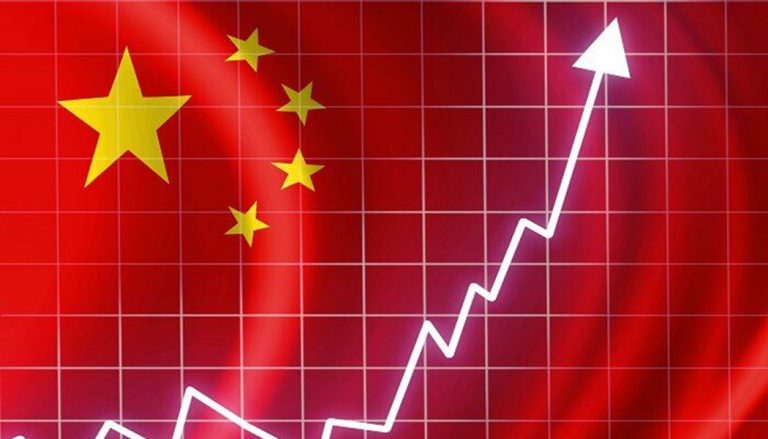
China’s stock market has experienced a significant downturn, with reports indicating that on April 7, 2025, it suffered its worst single-day crash since 2008. The Shanghai Composite Index, a key benchmark for mainland China’s stock market, reportedly dropped sharply, with losses estimated around 6.6% to 7.51% for the day, depending on the exact moment of reporting. This plunge has erased substantial market value and sparked widespread concern, drawing parallels to the global financial crisis of 2008. Several factors appear to have contributed to this dramatic decline.
Economic slowdown in China, marked by deflationary pressures and a persistent property crisis, has eroded investor confidence. Additionally, recent global trade tensions, including retaliatory tariffs from China in response to U.S. policies, have heightened market volatility. The lack of robust stimulus measures from Beijing to counter these challenges has further fueled the sell-off. For instance, while the government has intervened with state investments to mitigate losses, the absence of a comprehensive “big bang” fiscal package has left investors skeptical about a sustainable recovery.
The ripple effects of this crash are notable. Hong Kong’s Hang Seng Index, closely tied to mainland markets, also saw steep declines, with reports of a 9.4% drop earlier in the year being among its worst since 2008. Globally, the event has rattled financial markets, with U.S. stock futures and commodity prices like oil and iron ore sliding in response. This reflects China’s significant role in the world economy and the interconnectedness of global markets. Historically, China’s stock market has faced turbulence before, such as the 2007 bubble burst and the 2015-2016 crash, but the current situation stands out due to its severity and timing amidst broader economic woes.
Register for Tekedia Mini-MBA edition 19 (Feb 9 – May 2, 2026): big discounts for early bird.
Tekedia AI in Business Masterclass opens registrations.
Join Tekedia Capital Syndicate and co-invest in great global startups.
Register for Tekedia AI Lab: From Technical Design to Deployment (next edition begins Jan 24 2026).
The sharp decline in stock values erodes household wealth, particularly for retail investors who make up a significant portion of the market. This could dampen consumer spending, worsening China’s already sluggish economic recovery from deflation and the post-COVID slowdown. Companies listed on the Shanghai Composite and other indices may face higher borrowing costs and reduced access to capital as investor trust wanes. This could stall growth plans, especially for firms in vulnerable sectors like real estate and manufacturing.
The crash amplifies calls for Beijing to roll out aggressive stimulus measures. While state funds have stepped in to cushion losses, the lack of a decisive fiscal response so far might force a shift in strategy—potentially increasing debt levels to stabilize markets and the broader economy. A prolonged market slump could fuel public discontent, especially if tied to perceptions of government mismanagement. Historically, economic downturns have tested the Communist Party’s legitimacy, though its control mechanisms typically mitigate unrest. The crash has already triggered declines in global indices, such as U.S. futures and European markets, reflecting China’s role as a major economic engine.
Investors worldwide may pull back from riskier assets, amplifying volatility. China’s vast demand for raw materials means its economic woes hit commodity markets hard. Oil, iron ore, and copper prices have dipped, affecting exporting nations like Australia, Brazil, and Canada. This could lead to a broader slowdown in commodity-driven economies. A weaker Chinese economy might prompt the government to let the yuan depreciate further, boosting export competitiveness but risking a currency war. This, combined with ongoing tariff disputes (e.g., with the U.S.), could disrupt global trade flows.
Chinese tech giants and manufacturers, many dual-listed in Hong Kong, saw massive losses (e.g., the Hang Seng Tech Index dropping significantly). Supply chain disruptions could follow, impacting global tech and industrial production. The crash compounds pressure on China’s property sector, already reeling from a debt crisis. Falling stock values for developers signal deeper trouble, potentially necessitating more government bailouts. A hit to Chinese consumer wealth could reduce demand for luxury brands and outbound tourism, affecting companies in Europe, Japan, and Southeast Asia that rely on Chinese buyers.
If this crash marks a turning point, global investors might reassess China’s attractiveness as a market, favoring diversification into other emerging economies like India or Southeast Asia. Economic weakness could weaken China’s position in international negotiations, though it might also push Beijing to double down on self-reliance initiatives like “Made in China 2025.” A sustained downturn might force structural reforms—easing reliance on debt-fueled growth and exports—but such shifts would take years and face resistance from entrenched interests.


